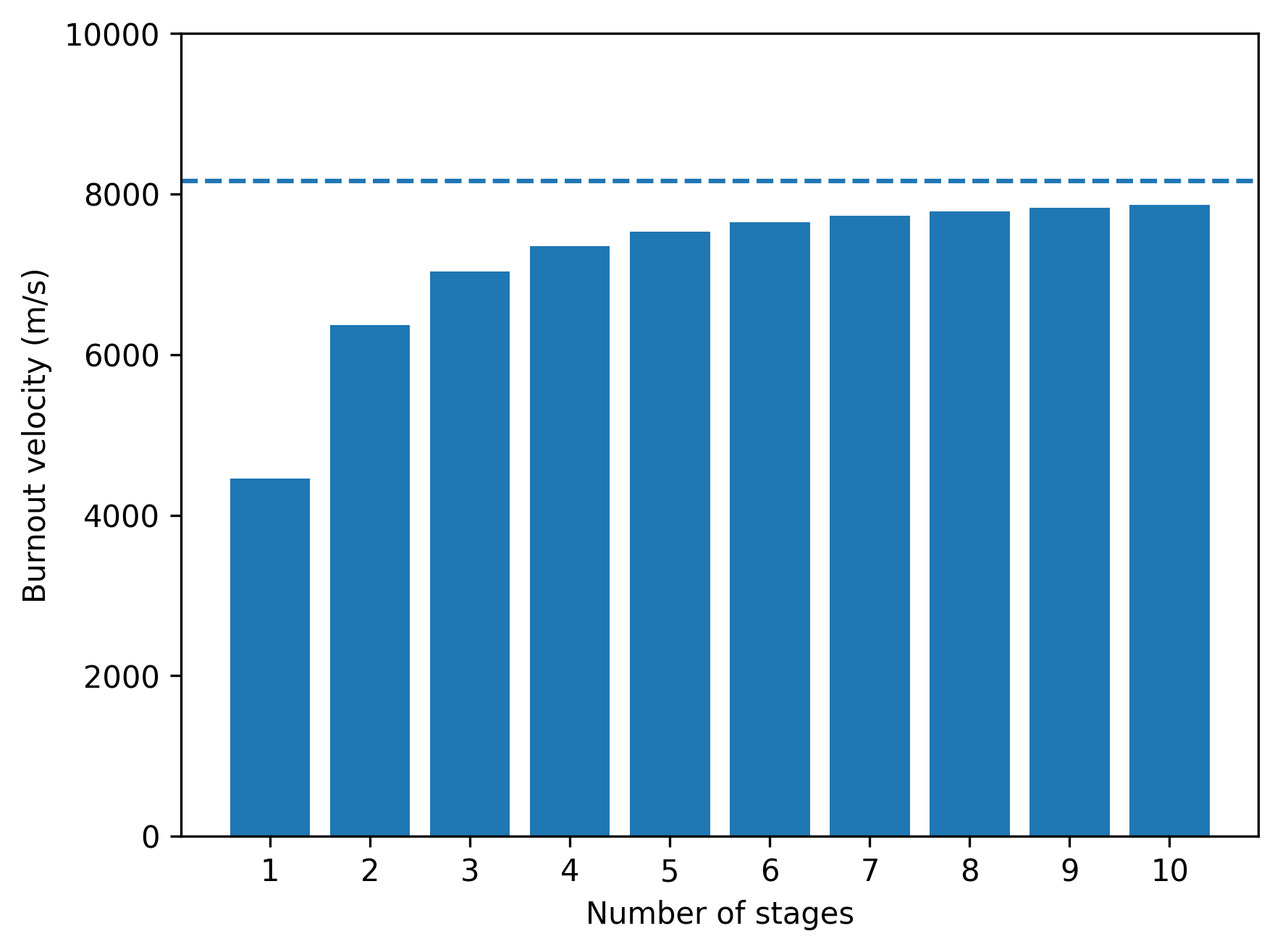Rocket staging#
# this line makes figures interactive in Jupyter notebooks
%matplotlib inline
from matplotlib import pyplot as plt
Show code cell content
# these lines are only for helping improve the display
import matplotlib_inline.backend_inline
matplotlib_inline.backend_inline.set_matplotlib_formats('pdf', 'png')
plt.rcParams['figure.dpi']= 300
plt.rcParams['savefig.dpi'] = 300
plt.rcParams['mathtext.fontset'] = 'cm'
Multistage rocket: similar stages#
For a multistage rocket with \(N\) similar stages, meaning each stage has the same effective exhaust velocity \(c\) (equivalent to the same specific impulse \(I_{\text{sp}}\)) and structural ratio \(\epsilon\), the structural/empty mass \(m_s\) and propellant mass \(m_p\) for the \(i\)th stage can be calculated:
where \(m_{\text{PL}}\) is the payload mass and \(\pi_{\text{PL}}\) is the payload fraction (\(m_{\text{PL}} / m_0\)).
The overall burnout velocity for an \(N\)-stage rocket is then
For an infinite number of stages, the burnout velocity would be
Example: varying number of stages#
How does the achievable burnout velocity—which is the maximum \(\Delta v\) for a launch vehicle—increase as the number of stages increases? How does this compare with the maximum theoretical velocity?
Determine for a multistage rocket with similar stages, each with \(\epsilon = 0.2\), \(c = 3000\) m/s, and an initial mass to payload mass ratio \(\frac{m_0}{m_{\text{PL}}} = 30\).
import numpy as np
struct_coeff = 0.2
eff_exhaust_velocity = 3000
m0_mPL = 30
payload_frac = 1 / 30
max_stages = 10
stages = list(range(1, max_stages + 1))
delta_v = np.zeros(max_stages)
for idx, N in enumerate(stages):
delta_v[idx] = eff_exhaust_velocity * N * np.log(
1 / (payload_frac**(1/N) * (1 - struct_coeff) + struct_coeff)
)
delta_v_inf = eff_exhaust_velocity * (1 - struct_coeff) * np.log(1 / payload_frac)
plt.bar(stages, delta_v)
plt.xlabel('Number of stages')
plt.xticks(stages)
plt.ylim([0, 10000])
plt.ylabel('Burnout velocity (m/s)')
plt.axhline(delta_v_inf, ls='--')
plt.show()

In Matlab:
clear; clc
epsilon = 0.2;
c = 3000;
m0_mPL = 30;
max_stages = 10;
delta_v = zeros(max_stages, 1);
pi_PL = 1 / m0_mPL;
for N = 1 : max_stages
delta_v(N) = c * N * log(1 / (pi_PL^(1/N) * (1 - epsilon) + epsilon));
end
delta_v_inf = c * (1 - epsilon) * log(1 / pi_PL);
bar(1:max_stages, delta_v)
hold on
yline(delta_v_inf, '--')

